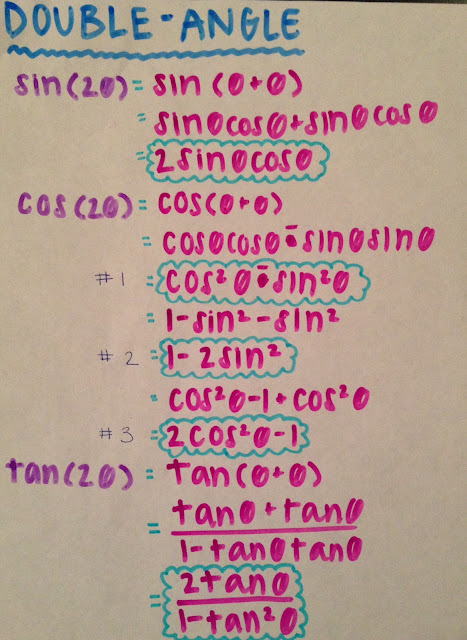Chapter three is about two types of transcendental (non algebraic) functions. The two types of covered in this chapter are
exponential and
logarithmic functions.
As stated in the textbook, an
exponential function  with base
with base 
is denoted by
where

, and

is any real number.
You can also write and exponential function as
where

is a
nonzero real and

is a
nonzero positive real number.
People in the
real world use exponents to represent things like compound interest, half-lives, populations, bacterial growth, radioactive decay, and many more things.
Basic Principles To Remember About Exponents:
- To multiply exponential terms with the same base, add the exponents:

- To divide exponential terms with the same base, subtract the exponents:

- Anything to the zero power equals one:

- Anything to the first power equals itself:

- A value raised to a negative exponent means:

- Fractions in the exponent mean:

- Zero to the zero power is indeterminate:

For a useful explanation on exponen
ts, visit:
http://www.purplemath.com/modules/expofcns.htm
Graphs of Exponential Functions and Transformations:
Below are some useful graphs of variations on the graph of 
from purplemath.com:
You can see how making small changes to the function can yield very different results the same as any other function. Do the transformations seem similar to other functions you learned about in the past math classes?
In the function

, each variable affects the way a graph looks.
- The
 term affects the vertical stretch and compression.
term affects the vertical stretch and compression.
- The
 term affects the horizontal stretch and compression
term affects the horizontal stretch and compression
- The
 term affects the horizontal shift
term affects the horizontal shift
- The
 term affects the vertical shift.
term affects the vertical shift.
An explanation of domains and ranges of exponential functions can be found on page 218 of your textbook.
Also,
- A negative
 term represents a reflection in the x-axis
term represents a reflection in the x-axis
- A negative
 coefficient represents a reflection in the y-axis
coefficient represents a reflection in the y-axis
One important application of exponents is in finding
compound interest. Below is the formula:
An thorough explanation of the formula is on page 222 of your textbooks.
Also, here is an informative site on compound interest:
http://www.purplemath.com/modules/expofcns4.htm
Logarithmic Functions:
Here is a definition of a logarithmic function:
For

and

and

,

if and only if

The function is called the
logarithmic function with
base a.

Logarithmic functions, just like their exponential counterparts, are used in the real world to define situations that would otherwise be difficult to represent. Decibels, pH, and the Richter scale all use a logarithmic scale for measurement and representation. Slide rules also use the principles of logarithms to simplify math calculations.
Properties of Logarithms:
-
 because
because 
 because
because 
 because
because  <= Inverse Properties
<= Inverse Properties - If
 , then
, then  <= One-to-One Property
<= One-to-One Property
Remember,

is equal to

, so in some problems it may help to use this property to
exponentiate in order to solve an equation or to simplify a logarithm
Enough complicated math terms. To explain logarithms simply, look at it this way: a logarithm is the exponent to which the base must be raised to get the x. The output of a log is an exponent.
For example,
because when you exponentiate, you get

, which we know to be true by the basic principles of exponents.
Here is an example of a logarithmic function graph.
Log (x):
(graphsketch.com is a website you can use to graph functions online to save or share.
Curious, isn't it? This graph represents what value you would have to raise the base (10) to to get the x value (input) of the equation. This is one reason the graph looks unfamiliar. More details about the graphs of logarithms are on page 232 of your textbook.
Natural Logarithms
The Natural Logarithmic Function:
The function defined by

,

is called the
natural logarithmic function.
Calculators denote this as LN. Most operations you do to find the natural log of a number will require a calculator. There are, however, some properties you may use to implement logarithms in your math to your advantage.
Properties of Natural Logarithms:
 because
because 
 because
because 
 and
and 
- If
 , then
, then 
Wanna hear some useless history about
famous mathematicians who developed logarithms as a way to simplify some of the tedious calculations they used to have to do while you are in the middle of studying for finals?? Too late- you just did. ;) Jeez! I did not know it took so long to write these blog posts. More to come soon...
Links to other blog posts (see these pages for many examples and more detailed notes):
3-1 Blog Post (Exponential functions and graphs)
3-2 Blog Post (logarithmic functions and graphs)
3-3 Blog Post (Properties of logarithms)
3-4 Blog Post (Exponential and logarithmic equations)
Something weird is going on with the blog pictures--all of them seem out of place.
























